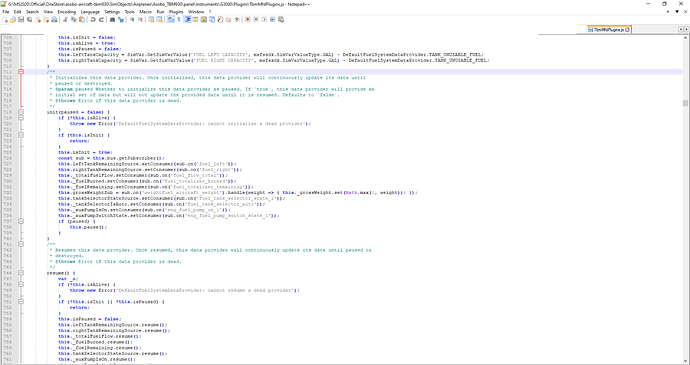Dear Asobo, I have been testing AAU1 for a while now, and I am noticing how
MSFS is making the Working Title units as default for most airplanes. With
this move of course the expectation from our customers is to follow the same
example and do the same for our products, therefore I am wondering if there is
some planning to absorb these units as part of the main MSFS SDK and what can
be done or designed to integrate them better to our products. For example one
of the biggest issues we face is the lack of extensive documentation about how
to integrate these units to our projects, such as, how to configure the
behaviour files, panel.cfg, panel.xml, etc. In addition if I am not mistaken
(since no enough documentation is available at this time) the autopilot is
also configured differently and it doesn’t follow the settings we write in
system.cfg, so how we configure the AP? Another big change seems to be how we
configure the Engine sections in the panel.xml, with AAU1 and inspecting the
TBM for the G3000 unit, I can see a big shift from how we do things currently,
for example, with Asobo units we normally just put a gauge xml tag like this:
1. 2. DoubleVertical
3. Turbo_FuelGauge
4.
5. LBS
6. 0
7. 580
8.
9.
10.
11. name="L:FSR_M500_FUEL_LEFT_QUANTITY" unit="number"/>
12. name="FUEL WEIGHT PER GALLON" unit="pounds"/>
13.
14.
15.
16.
17. name="L:FSR_M500_FUEL_RIGHT_QUANTITY" unit="gallons"/>
18. name="FUEL WEIGHT PER GALLON" unit="pounds"/>
19.
20.
21.
22. red
23. 0
24.
25.
26. red
27. 0
28. 25
29.
30. text="True">100
31.
32.
This is very easy to do, quick and easy to understand. Whereas the TBM
panel.xml under AAU1 has a link to JavaScript files and the engine gauges are
writing in pure JavaScript format, taking several lines of code:
This is incredible powerful for
sure, but at the same time much harder and difficult to implement, especially
without any documentation or easy examples available for 3rd party developers.
But perhaps we still can use the old method + this method? Is hard to know at
this stage and in hence why I raise the question about what are the plans for
the future of avionics in terms of the SDK, it would be great if everything we
need to develop airplanes comes directly from the MSFS SDK installer,
alongside with documentation, examples, etc. Kind Regards, Raul Morales

